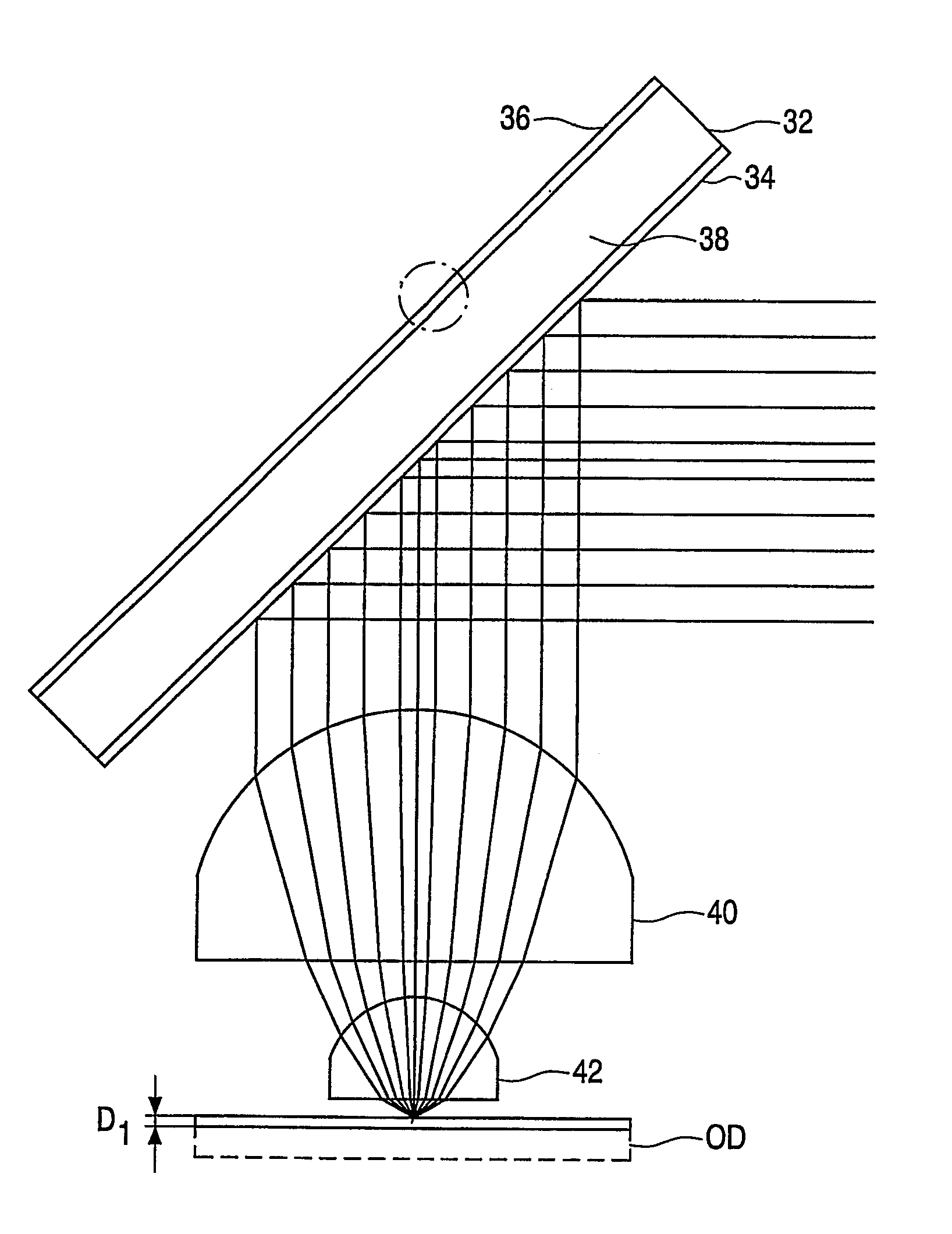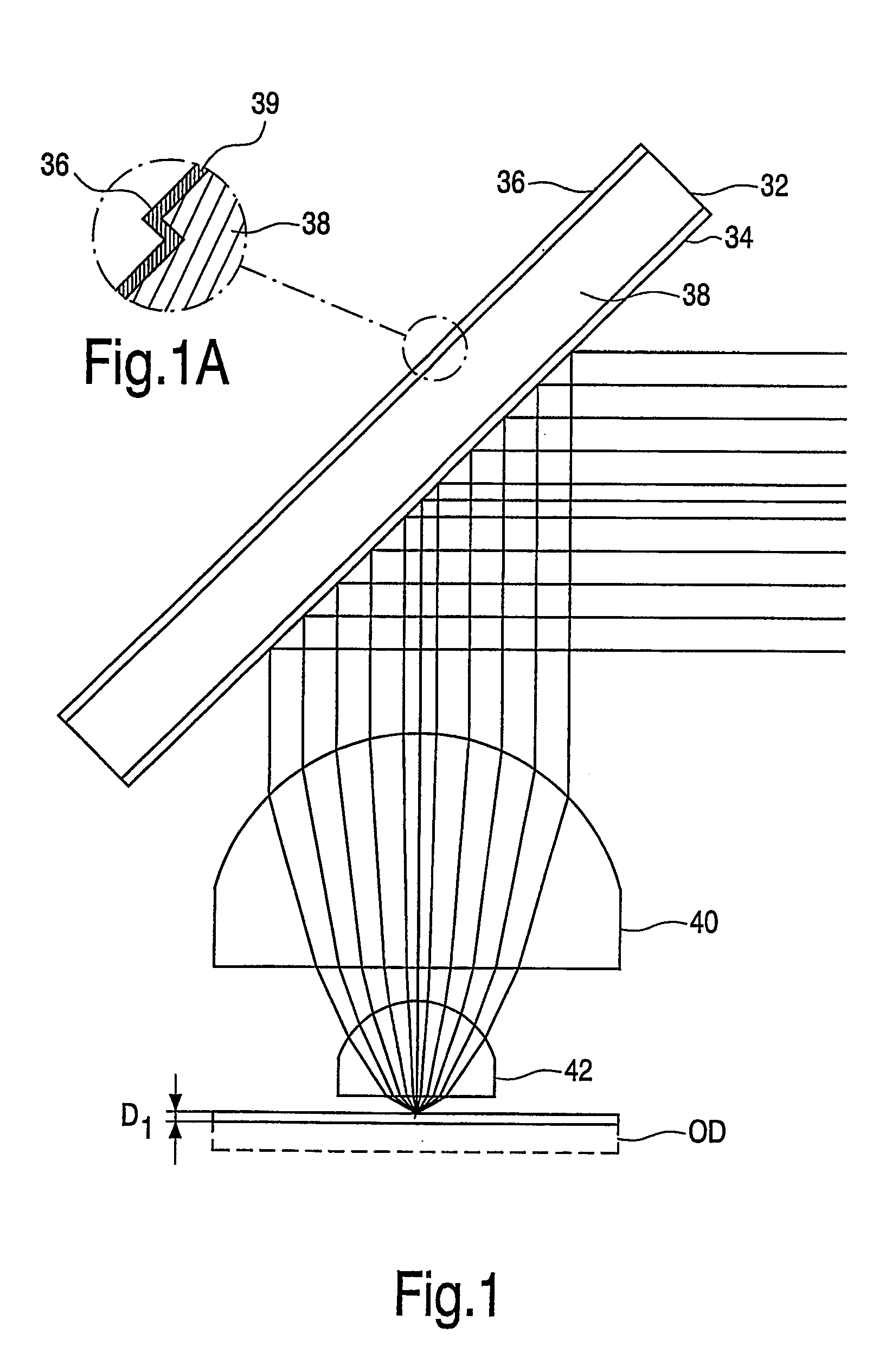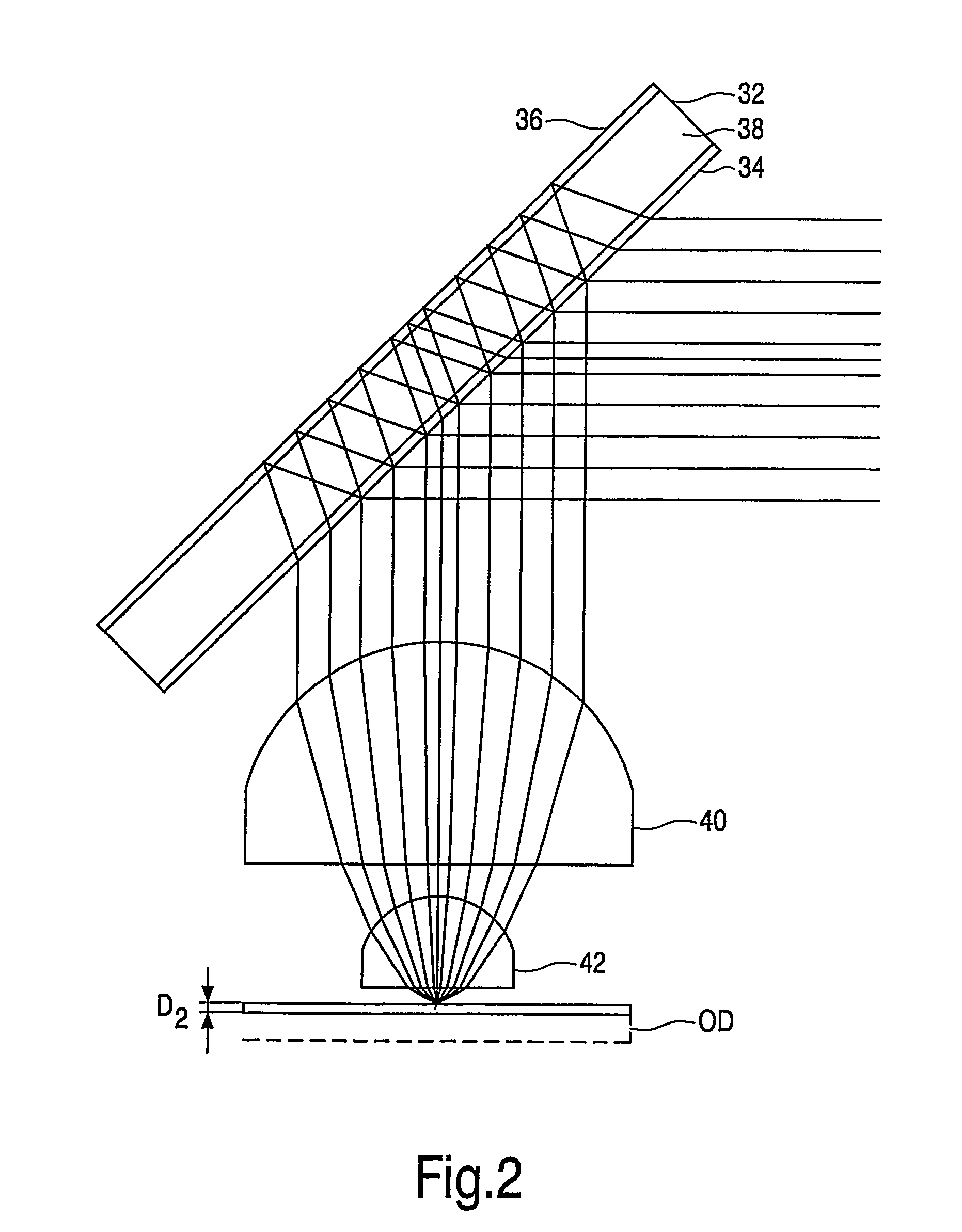Optical scanning device
a scanning device and optical technology, applied in the field of optical scanning devices, can solve the problems of increasing the cost of scanning devices' manufacture, wasting certain amounts of input light, and deteriorating the resolution of optical spots formed, so as to reduce astigmatism and less radiation energy loss
- Summary
- Abstract
- Description
- Claims
- Application Information
AI Technical Summary
Benefits of technology
Problems solved by technology
Method used
Image
Examples
Embodiment Construction
[0023]FIG. 1 illustrates a phase modifying folding mirror 32 arranged in an optical scanning device in accordance with one embodiment of the invention. The folding mirror 32 includes a first reflective surface 34 formed from a thin-film laminar structure, similar to that used in polarizing beam splitters, having polarizing characteristics. The first surface 34 reflects radiation impinging upon it at a 45° angle with a first polarization, and transmits radiation impinging upon it from the same angle with a second, orthogonal polarization.
[0024]A second reflective surface 36 is arranged to the opposite side of the folding mirror 32. As shown in FIG. 1A, the second reflective surface is coated in a mirroring material, for example, a thin metallic film, 39, and the surface 36 includes a non-planar phase structure in the form of stepped annular zones, the zones forming a non-periodic pattern of different heights corresponding to a wavefront aberration to be generated when radiation of th...
PUM
| Property | Measurement | Unit |
|---|---|---|
| angle | aaaaa | aaaaa |
| optical path difference | aaaaa | aaaaa |
| thickness | aaaaa | aaaaa |
Abstract
Description
Claims
Application Information
 Login to View More
Login to View More - R&D
- Intellectual Property
- Life Sciences
- Materials
- Tech Scout
- Unparalleled Data Quality
- Higher Quality Content
- 60% Fewer Hallucinations
Browse by: Latest US Patents, China's latest patents, Technical Efficacy Thesaurus, Application Domain, Technology Topic, Popular Technical Reports.
© 2025 PatSnap. All rights reserved.Legal|Privacy policy|Modern Slavery Act Transparency Statement|Sitemap|About US| Contact US: help@patsnap.com



